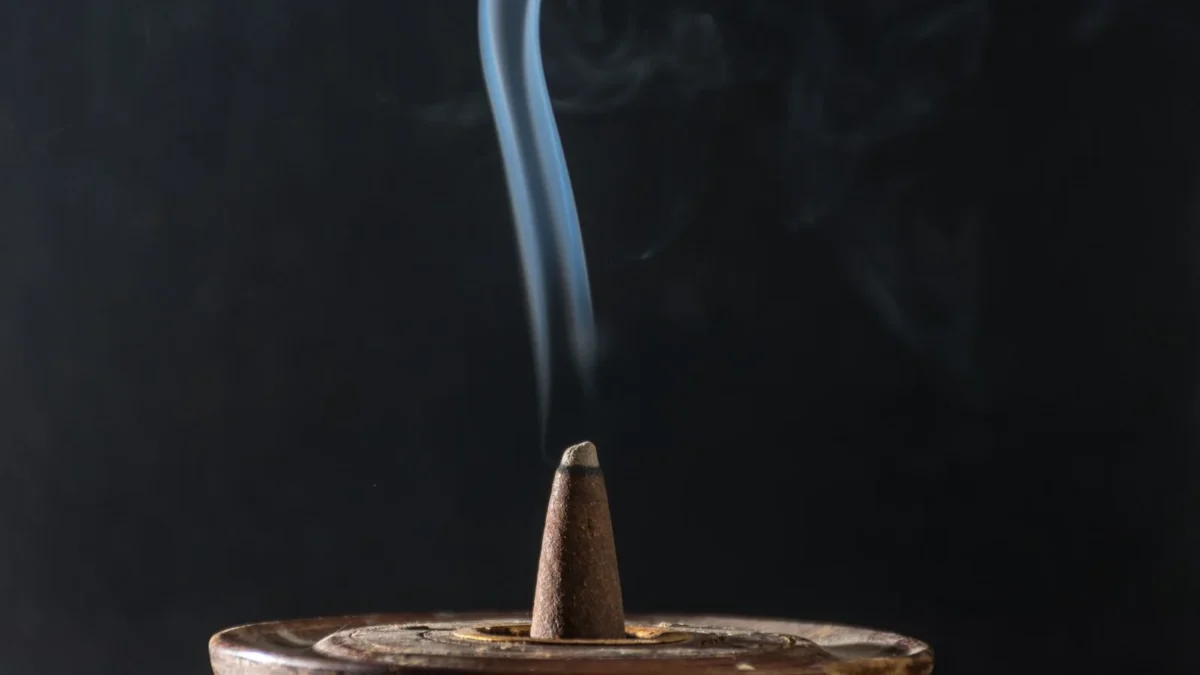Loban Dhoop is a traditional aromatic incense that has been part of Indian culture and spirituality for centuries. Its soothing fragrance fills spaces with a serene vibe, making it an all-time favourite in homes, temples, and meditation centres. But have you ever asked how this magical incense is made and what secret ingredients give it its unique fragrance? Let’s explore the very interesting world of Loban Dhoop.
The aroma of Loban Dhoop is more than just a pleasant scent; it has a profound connection to ancient traditions and holistic practices. In spiritual ceremonies, it is believed to purify the environment, ward off negative energies, and enhance the focus and connection during prayers or meditations. The gentle, earthy aroma also fosters relaxation, making it a staple in practices like yoga and mindfulness.
What Is Loban Dhoop?
Before knowing the process through which it’s made, we need to understand what Loban Dhoop is. Loban is a tree bark resin which is acquired from the main trees Boswellia serrata. When this is burnt it gives an earthy smell. So Loban is something that holds a lot of significance in any ritual or ceremony. It is also a part of the Natural incense stick prepared using Loban and other naturally available products that are fashioned into sticks, cones, or powdered for convenience of burning.
Why is Loban Dhoop Special?
Loban Dhoop is special due to its therapeutic properties and spiritual powers. It cleans the air, repels negative energies, and enhances focus and relaxation. Its all-natural ingredients guarantee its safety and effectiveness in contrast to synthetic incense.
Ingredients of Loban Dhoop
Loban Dhoop creation is an art that brings natural elements harmoniously. Let’s take a closer look at its key ingredients.
1. Loban Resin:
The star ingredient, bark extract of trees.
It is sticky gummy and gives a soothing fragrance while burnt
2. Herbal Powders:
Add to the mixture ingredients such as sandalwood, neem, and tulsi powder
The powders will improve the fragrance and bring some healing qualities
3. Essential Oils:
Add the mixture with oils such as rose, jasmine, or lavender. These will bring an appetizing fragrance.
Also acting as binding agents for ingredients.
4. Wood Powder:
The ingredient is usually obtained from aromatic bamboo, wood, etc.
Structure It helps the dhoop to burn evenly.
5. Charcoal Powder:
Used in small quantity in order to burn slowly and steadily.
6. Natural Gum or Resin Binders:
Material such as gum arabic or guar gum is added to bind the powders.
7. Water or Floral Extracts:
To knead it into the desired shape.
How Is Loban Dhoop Prepared?
Making Loban Dhoop is a process that combines the old ways of doing things with the new tools. Let’s break it down step by step:
1. Gathering the Loban Resin
The resin is collected by making small cuts in the bark of the Boswellia tree. It oozes out as a sticky liquid and hardens when exposed to air. Once hardened, the resin is scraped off and cleaned.
2. Grinding the Ingredients
Loban resin is ground into fine powder Herbal powders, charcoal, and wood powder are also ground to be well mixed.
3. Mixing
All powdered ingredients are mixed together in a large bowl, Some mixture has essential oils or floral extracts for fragrance, Some have a natural binder called gum to make a cohesive dough
4. Dhoop Shaping
Dhoop is shaped as cones, sticks, or logs. For cones, molds are used to have uniformity. For sticks, the mixture is wrapped around a bamboo stick.
5. Drying the Dhoop
The shaped dhoop is allowed to dry in the air. Drying may take a couple of days depending upon the weather and humidity. This step makes sure that the dhoop burns out evenly without crumbling.
6. Packaging the Dhoop
The dhoop, after drying, is packed into airtight containers for retaining its fragrance. Aesthetic packaging increases the value of the product.
Secrets to Perfect Loban Dhoop
1. Quality of Loban Resin
The purity of the resin determines the aroma and effectiveness of the dhoop.
High-quality resin burns smoothly and produces less smoke.
2. Perfect Proportions
The correct balance of ingredients ensures the dhoop burns evenly and releases a consistent fragrance.
3. All-Natural Additives
The absence of synthetic chemicals keeps the dhoop safe and enhances its natural fragrance.
4. Patience and Precision
Each step, from mixing to drying, requires time and attention to detail.
Benefits of Loban Dhoop
Loban Dhoop is more than just a fragrant incense. It offers several benefits:
Spiritual Purification: Clears negative energy and creates a serene atmosphere for prayers.
Stress Relief: The calming aroma helps reduce stress and anxiety.
Air Purification: Removes foul odors and kills bacteria in the air.
Meditation Aid: Enhances focus and concentration during meditation or yoga.
How to Choose the Best Loban Dhoop
When buying Loban Dhoop, look for these features:
Natural Ingredients: Synthetic chemicals must not be present in the product.
Rich Fragrance: Good quality dhoop has a good, long-lasting fragrance.
Trustworthy Brand: Choose brands known for quality.
Faqs
1. Is Loban Dhoop safe to use?
Yes, Loban Dhoop is safe when made from natural ingredients. It’s a better alternative to synthetic incense, which may contain harmful chemicals.
2. Does Loban Dhoop have therapeutic properties?
Yes, Loban Dhoop has therapeutic properties. Its aroma is known to reduce stress, improve focus, and create a relaxing environment. It also helps in purifying the air and promoting overall well-being.
3. Can I use Loban Dhoop daily?
Absolutely! Loban Dhoop can be used daily for prayer, meditation, or simply to freshen up your living space. Its natural fragrance is soothing and beneficial for mental relaxation.
4. How is Loban Dhoop different from regular incense?
Loban Dhoop is made using natural Loban resin, which has a distinct earthy and calming aroma. Unlike synthetic incense, it doesn’t contain harmful chemicals and is often used for spiritual and therapeutic purposes.

